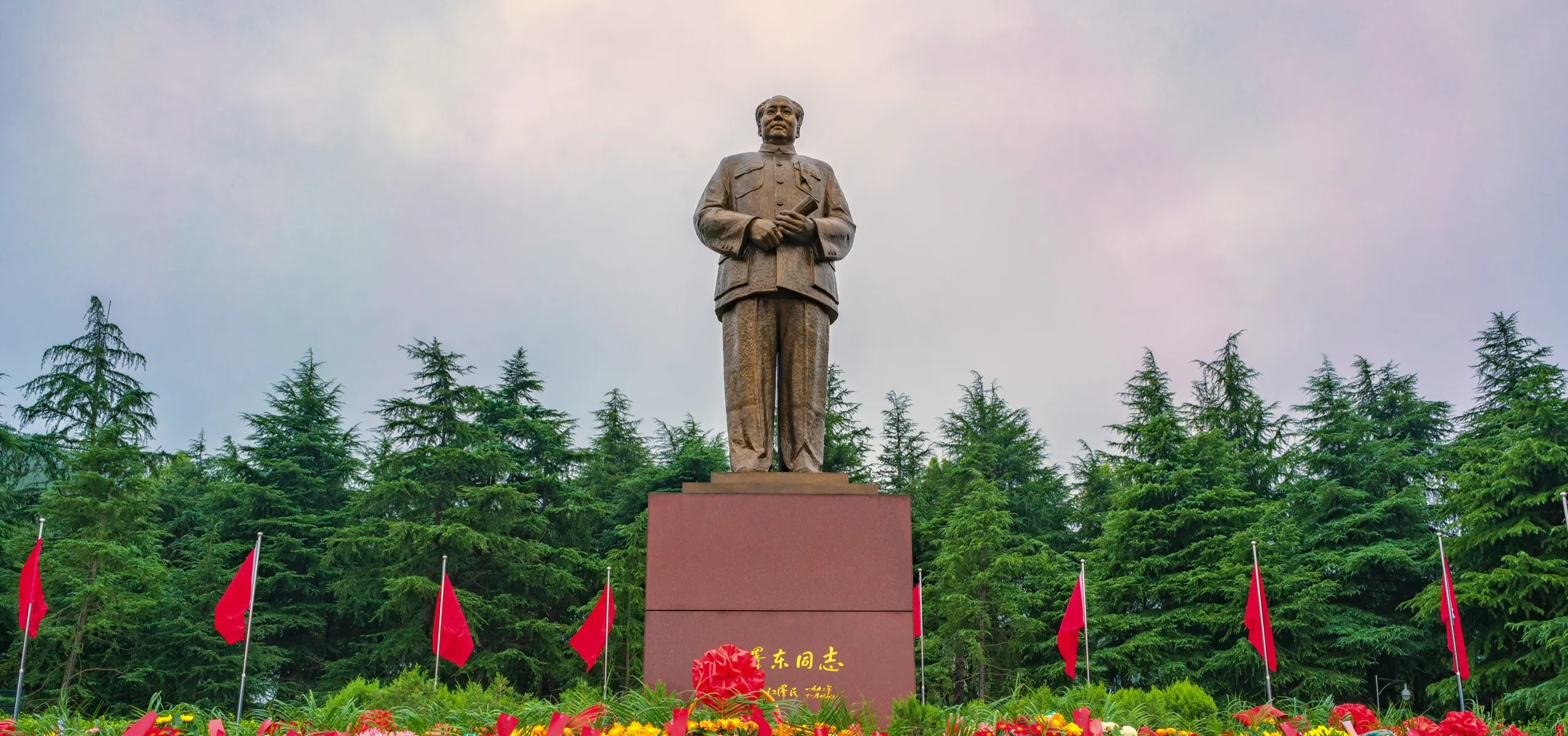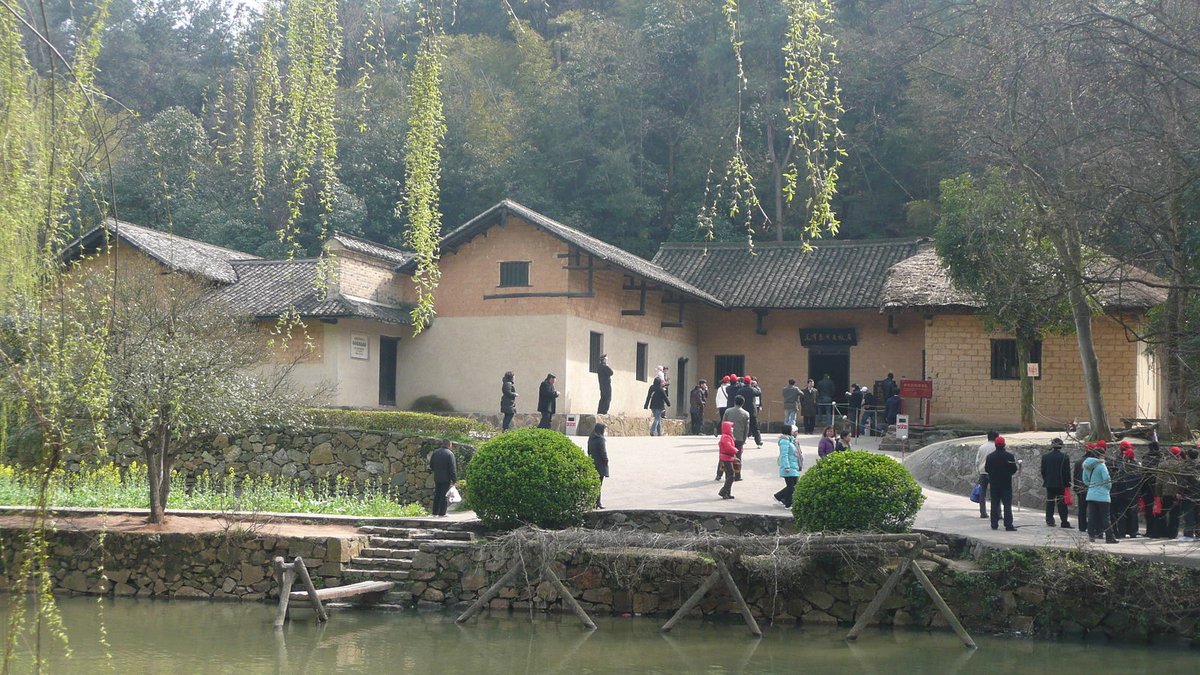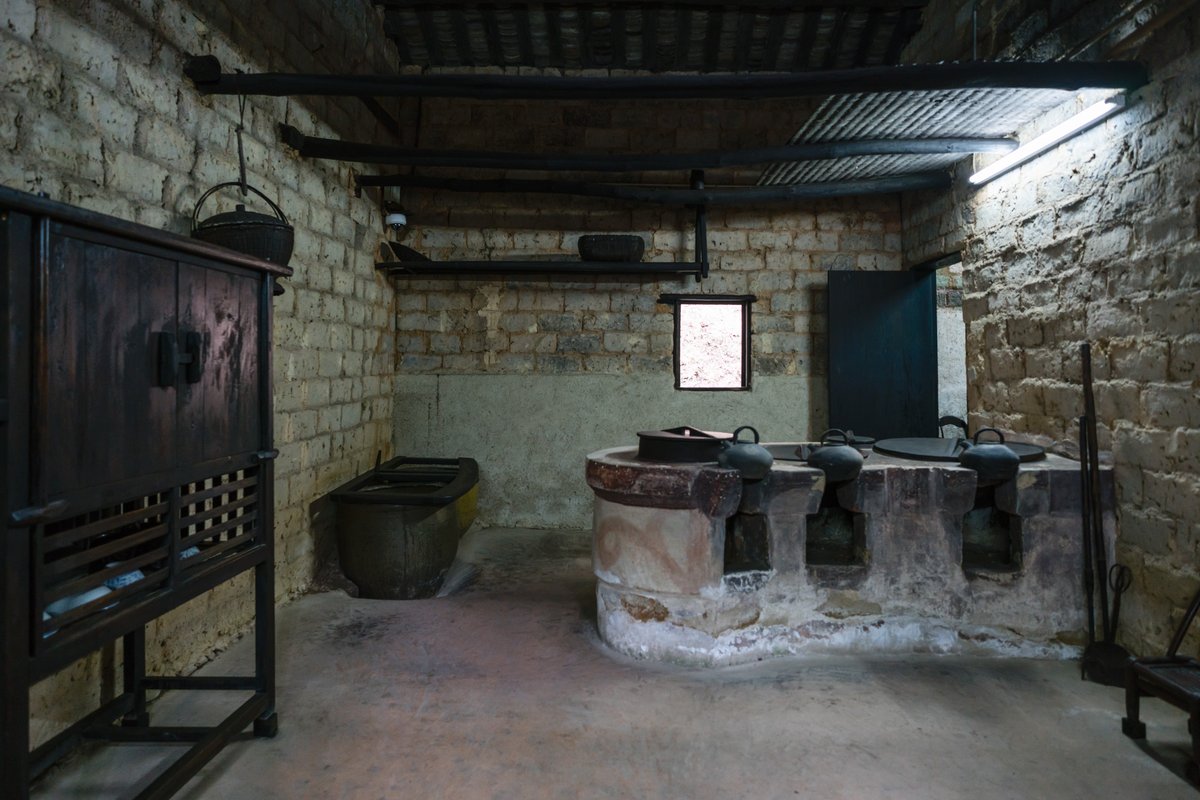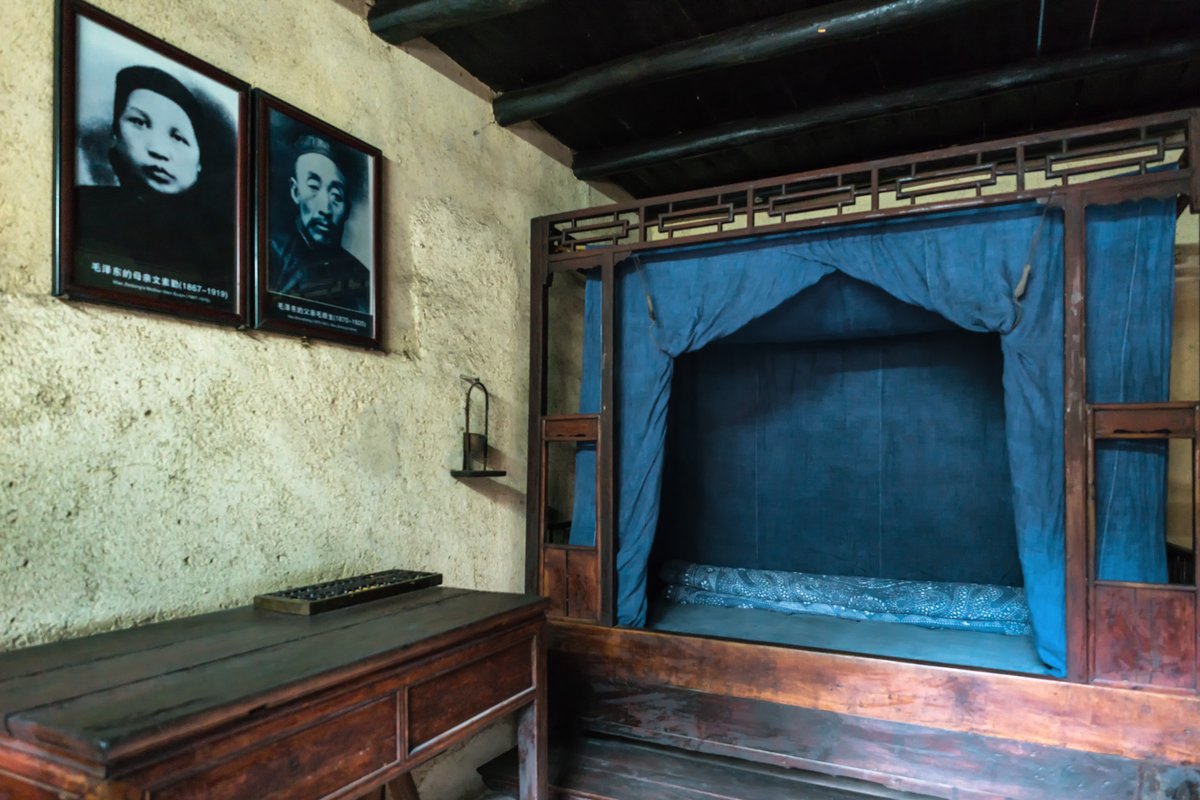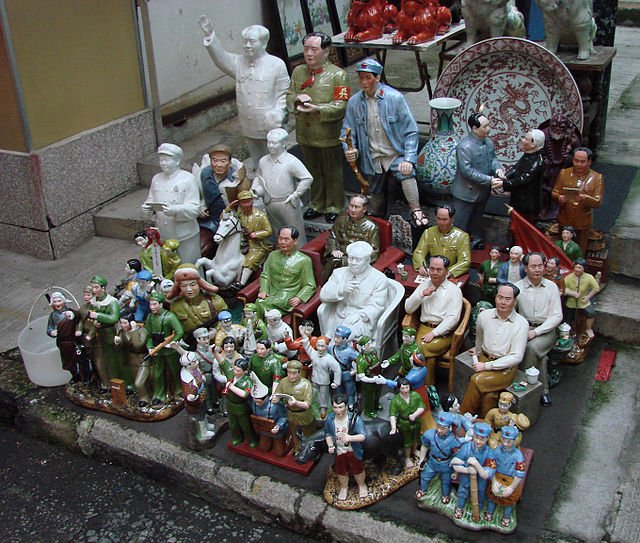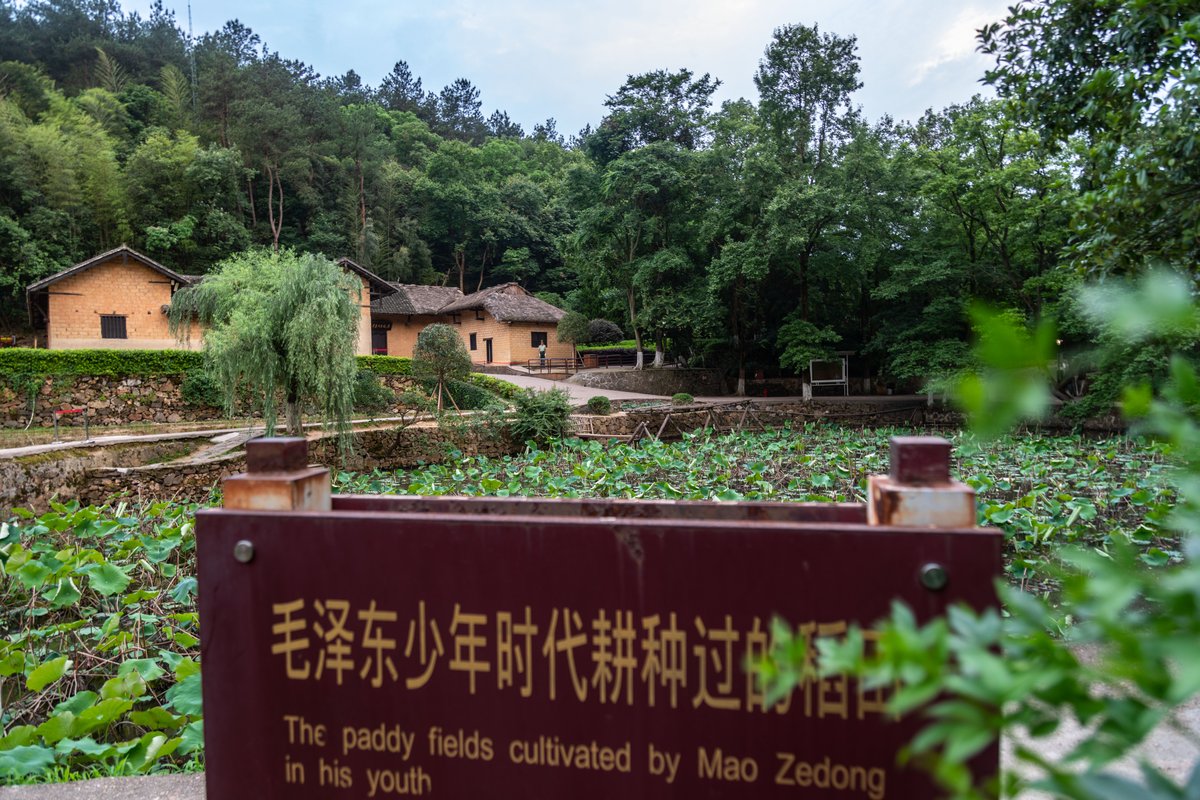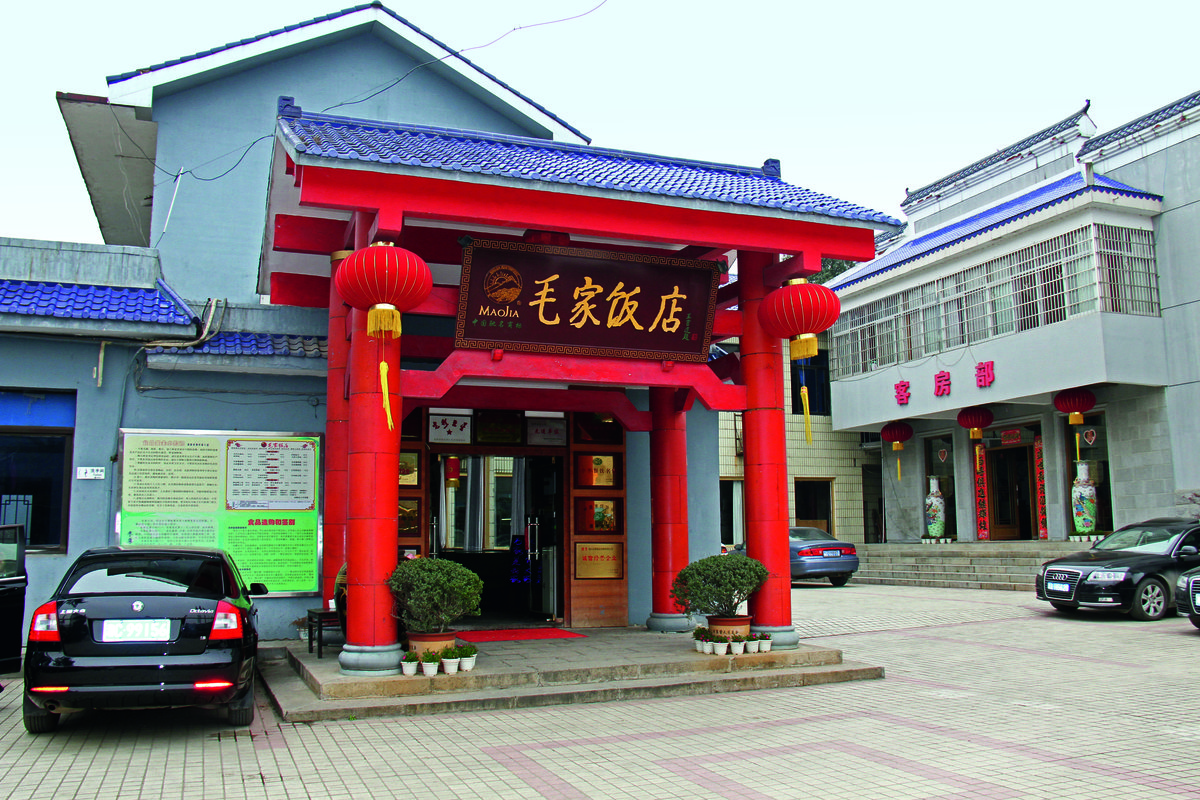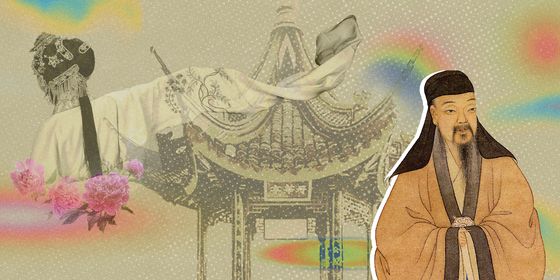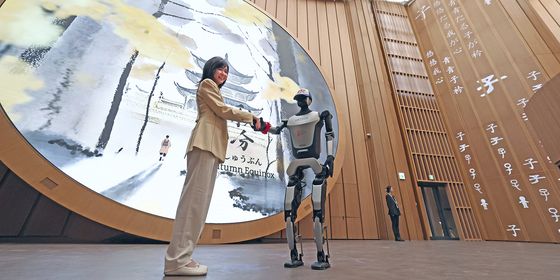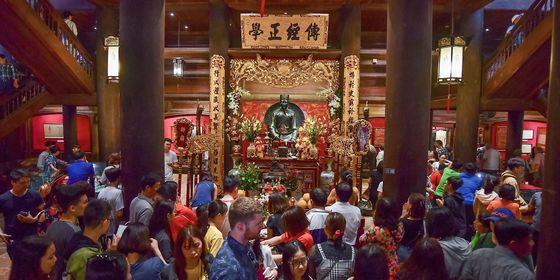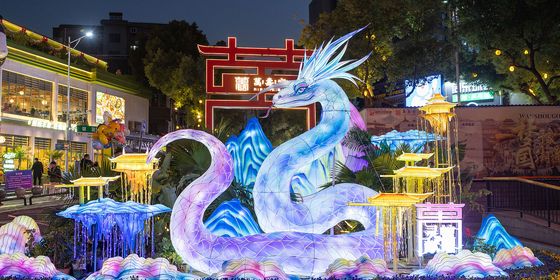Shaoshan, Chairman Mao’s birthplace in Hunan province, has become a top tourist site where people burn incense to the revolutionary hero while selling T-shirts of his face
Vendors shout the names and prices of trinkets they are selling, tour guides take bourgeois families enjoying unproductive leisure time through attractions, and vendors charge upwards of 5 yuan for a bottle of water in the scorching mid-July heat of Hunan.
It’s not exactly what one might expect from the home of the Communist Party icon who wanted to wipe capitalism from the face of the earth, but then again, China today isn’t exactly what it looked like in Chairman Mao’s day. Shaoshan (韶山), the hometown of the founder of the People’s Republic, is an apt metaphor for modern-day China: Merchants shouting unrestrained sales pitches laud the quality of overpriced communist-themed memorabilia, and business people make offerings to the god of the red sun.
Like many other international visitors to Shaoshan, I declined my first opportunity to visit because I didn’t really want to see a patriotic tourism destination brimming, I imagined, with extreme ardor and zealotry. A classmate of mine, Tan Chao, recommended Shaoshan to me as well as another city, Zhuzhou (株洲), a place I would return to several times. Her family owns and operates about a dozen hotels in the area south of Changsha, and this year Chao was in charge of launching the Love Hotel, with themed rooms based on love stories.
While in Zhuzhou with Chao, boredom got the better of us, so we decided to go off to Shaoshan about two hours to the west. By the time we got there, Mao’s ancestral home and museum were closed, but there were still a lot of people in Mao Zedong Bronze Statue Square admiring the statue of the nation’s founder, taking photos, and praying.
Visitors stand in front of the 10-meter-tall (a four-meter base and a six-meter figure) statue, located up two short staircases in front of a display of 15 Chinese flags, and bow their heads. Some walk around it three times. In the throngs of visitors, commotion breaks out as a tour guide berates customers chattering in front of Mao.
“Can you understand Chinese?” the guide yelled, after unsuccessfully telling them to quiet down. “We are going to worship Mao.” On the count of three, they all bowed their heads in unison.
Chao and I took our obligatory photos in front of the statue, and then Chao, formerly a business student, did the same thing as the other visitors; she stood on the red carpet, closed her eyes, clasped her hands in front of her heart, and then bowed her head.
When I asked what she was praying for, she replied that she prayed for the financial success of the Love Hotel.
This quasi-religious scene repeats itself every day. As the flowers gifted by private companies at the base of the statue can attest: everybody loves Mao, even capitalists.
Mao’s legacy has indeed been good for the local businesses of Shaoshan. The Chairman was born there, about 120 kilometers southwest of the provincial capital Changsha, in 1893. At age 33, he led the Autumn Harvest Uprising in Hunan. While his life took him away from his hometown, his legacy remains stronger there than almost anywhere else.
He put the small city of 100,000 people (with 15,000 in Shaoshan Village) on the map, attracting millions of tourists each year. In the first five months of 2013, about 3.5 million tourists came to Shaoshan, adding 788 million yuan to the economy (36 million US dollars), according to the China Tourism Post. Hotels and restaurants abound, with names like Mao’s Four Wives Restaurant, Every Day is Red Countryside Food, Red Sister Country Restaurant, and Red Flag Restaurant.
Intrigued by my first short trip, I returned to Shaoshan in July to take a closer look. Arriving at the bus station after a one-hour ride from Xiangtan (湘潭), I didn’t notice anything special, because I got off the bus into the parking lot, but if I had gone inside the station, as I did when I left Shaoshan, I would have seen a large white statue of Mao and a painting of Mao being embraced by peasants. If you took the train instead of the bus, never fear; there is a large painting of Mao’s face outside the Shaoshan Train Station. Beneath the facade of tourist-friendly attractions, the city itself shares the charm of any other small Chinese city: old damas dance in parks, street vendors sell snacks, parents eagerly corral their children to practice their English with passing foreigners.
If you really want to get in the spirit of all the Mao-style tourism, there is perhaps no better way than with the Chairman’s favorite food, hongshaorou (红烧肉, red-braised pork). The dish consists of chunks of fatty pork cooking in a savory caramelized star anise sauce.
The Shaoshan people claim that it’s delicious and nutritious, but while I can’t deny its deliciousness, almost every bite is at least half fat. As I poured some rice onto the meat, a waitresses pointed out how oily the rice would be, soaking it all up from the dish. I started “washing” the pork in water, a practice I had seen some of my health-conscious friends do in China to get rid of excess oil. Soon the bowl of water was dark brown, and the waitress had to bring me a new one. One big bowl of red cooked pork costs about 70 yuan at the Mao Palace Holiday Hotel (毛府假日大酒店), at which you can find the ubiquitous Mao statues and T-shirts on sale in the lobby.
Although red cooked pork is tame, Hunan cuisine is famous around the country for its fragrant and spicy flavors. Other celebrated dishes include fish head with cut peppers (剁椒鱼头), Dong’an chicken (东安子鸡), and stinky tofu (臭豆腐) in spicy sauce.
Mao once said that anyone who eats spicy peppers is a natural revolutionary. He must have been onto something, because the area around Changsha proved to be fertile ground for revolutionary heroes. Huang Xing, one of the leaders of fight to overthrow the Qing Dynasty (1616 – 1911), was born in Changsha—the place of his birth now marked with a snack street named after him. Former Chinese president Liu Shaoqi was born in Ningxiang County, within Changsha. Hu Yaobang, a post-Mao reformer, was born in Liuyang east of Changsha prefecture. While Shaoshan itself certainly brings in a hefty sum, the province of Hunan reportedly earned about 4.6 billion dollars from “red tourism” in 2012.
In Shaoshan, the first attraction visitors find themselves drawn to is Mao’s ancestral home. The clay brick house is located five to 10 minutes from Shaoshan city by car, down a road between ponds covered with bright pink lotus blossoms in summer, next to Mao’s old one-classroom primary school.
Entrance is free, and between 8 a.m. to 5 p,m., you can walk in to see the family bedrooms, kitchen, and stables. Visitors remark on how big the 473 square-meter home is as they walk through, and the long line moves relatively quickly. Visitors aren’t supposed to take photos inside the house, and they generally abide halfheartedly; few people pose for pictures, but they do take pictures of the contents of each room except for Mao Zedong’s own bedroom. There, a soldier stands and barks in a gruff monotone voice, “No photos”, as if irritated at having to repeat the same demands as the prominently placed signs.
Across from Mao’s home are the barracks where the two dozen or so soldiers live. They guard Mao’s house all day. After the home closes to visitors at the end of the day, a soldier stands outside until morning. Between the barracks and the house is the pond in which Mao once swam—before his famous swims in the Yangtze River.
Continuing down the path outside the house, you find the obligatory shopping corridor at most tourist sites, packed full of Mao accessories and memorabilia that peddlers try to wrangle tourists into buying. There, you can find the 5-yuan water, but if you just wait until you get toward the end of the corridor, you can find the same bottles for just 3 yuan. Among the shirts, statues, and emblems on sale, you just might find, as I did, a television set hanging on the wall playing a video on loop from an event in 1966 wherein Mao, standing on the Tian’anmen Rostrum, was greeted by a sea of students thumping their copies of the Quotations of Chairman Mao—the year the Cultural Revolution began.
After all the changes China has gone through in the years since, that period of turmoil wasn’t erased; rather it was turned into Che-style Communist chic, commercialized like everything else. Miniature statues of Red Guards are on sale there, as are purported first editions of Mao’s Quotations, known in the West as the ”Little Red Book,” for 396 yuan, plus with shirts featuring the Chairman’s face. The juxtaposition of the modern ideas and the dogma of old, like Andy Warhol’s pop art portraits of Mao, is alluring—the mix of sarcasm and the sacred. A clay can of Campbell’s soup wouldn’t look out of place next to the tote bags.
I found the owner of a shop selling Mao statues burning incense on the ground with 20 yuan bills placed under a bust of Mao. “What is it about Mao?” I asked. The owner of the store said, “Mao isn’t a normal person. He’s a bodhisattva.”
The word for “god” can be a tricky one to translate in Chinese. “Shen” (神) doesn’t just mean a heavenly being like it does in many Western religions. It can also mean a spirit, consciousness or a celestial spirit, deity, or legendary figure. Chinese people have traditionally engaged in spiritual practices that are not religious in nature. Ancient generals like Guan Yu (关羽) of the Three Kingdoms period (220 – 280) are enshrined in businesses for good luck, and people burn paper money for the spirits of their ancestors still inhabiting this universe. In this sense, Mao is revered and even worshiped like an ancestor of the nation and the city. “Without Chairman Mao, there wouldn’t be New China,” as the saying goes.
“Chairman Mao was born in Shaoshan. Shaoshan hasn’t had any natural disasters. The older generation says Mao protected us,” Hu Xiaoquan, who is one of about 500 tour guides working in Shaoshan, tells me. ”We listened to our grandfathers and grandmothers say Chairman Mao is our ’god of peace,’ so we should revere Chairman Mao.”
“For my grandparents’ and my parents’ generations, people really admire Mao, like Jesus for Christian people,” Chao comments. “Nowadays, I am not sure about it. I think of him as a great leader whom I admire.”
It is not an exaggeration to say the town breathes the legacy of its most famous native son. A local restaurant had a photo of Mao on its wall under a sign that read, “The Chairman went to my house.” The occasion, it turns out, was June 1959, and Mao had returned to his hometown for the first time since rebelling and founding the new nation.
In the photo, he sits on a wooden bench smoking, surrounded by his Shaoshan comrades. Li Wengui, the patriarch of Mao’s neighboring Li family, sits with a big smile on his face, his daughter in front of him and his son, at that time just a baby, sitting next to him. The son later wrote a message under the photo that says, “On the afternoon of June 26, 1959, the Chairman returned to his old hometown, from which he was separated for 32 years. Shaoshan, near and dear…[He] asked if my grandfather, his childhood comrade, was home and how much rice we had harvested…and he left my grandfather Li Wengui this extremely precious picture.”
After exiting the enclave of Mao’s old home and going down the road toward the parking lot, I met a calligrapher writing and selling poetry under a stone bridge. Upon the red tablecloth of his table he had spread out a newspaper, blackened with ink and worked meticulously, piling up completed works under a block. The calligrapher put Mao’s stature in a longer historical perspective: “In Chinese history, we would worship the emperor. This is the traditional culture from thousands of years ago…It is hard to break 5,000 year old feudal culture, but Mao changed a lot of it.”
His calligraphy hangs on the wall, and he had written poems about some of Mao’s family members—nephew Mao Chuxiong, son Mao Anying, cousin and adopted sister Mao Zejian, brothers Mao Zetan and Mao Zemin, and wife Yang Kaihui.
Yang was Mao Zedong’s second wife, and she held a special place in his heart. He and she chose to marry each other and chose to fight together (though his first marriage was arranged when he was a child). Captured by Kuomintang forces in 1930, she refused to denounce Mao, and for that she was executed. The poem describes her as a solemn and heroic woman.
The women of the revolution are revered as warriors just as the men. “Female monarch and hero,” the poem about Mao Zedong’s adopted sister and guerrilla leader Mao Zejian said. At the Mao Remembrance Park up the hill from the bridge, Mao Zejian is depicted in a statue with a fierce look upon her face, her left fist clenched, and a pistol held at ease in her right hand.
It’s a park with halls recalling history and replicas of important red sites throughout the country. The Yan’an Pagoda, originally built during the reign of Emperor Taizong of the Tang dynasty (618 – 907), which became a symbol of the revolutionary spirit, is replicated at half scale. A copy of the Luding Bridge over Sichuan’s Dadu River, which the Communists crawled across during the Long March, is built over a pond. There’s a copy of the building where the Zunyi Conference was held in 1935 when Mao ascended to power.
By the time I left the park, it was close to evening. I was hungry again. There was a restaurant down the road from the gate with a big sign proclaiming “Mao Family Restaurant” (毛家饭店). I remembered the name from advertisements in the taxi and the brand name that accompanied the hot peppers on sale everywhere: Mao Family Food (毛家食品). Inside there was a semi-museum display about this famous brand. Tang Ruiren, the woman whose face is depicted with the brand on all the foodstuffs, started the restaurant across the street from Mao’s home in 1987. Since then it has become a popular chain and expanded across the country. She, too, had a large Mao statue with burning incense.
I sat down and ordered red pepper fish head. The waiters wore shirts with Mao’s face and his famous quote, “Serve the people” (为人民服务). After one brought out the fish drenched in peppers, another waitress brought a bowl of red-braised pork. Later, another one brought me a dish of greens. All complimentary, they said.
I never figured out why they brought me two free dishes. Maybe they heard me complaining to a friend about the overpriced water on the phone. But at that moment, it seemed to me that the people of Shaoshan—with their spicy Hunan food, decorous red tourism, and common fervor—take the phrase “serve the people” very much to heart.
This is a story from our archives. It was originally published in 2015 in our issue, “Military,” and has been lightly edited and updated. Check out our online store for more magazine issues and books you can buy!





